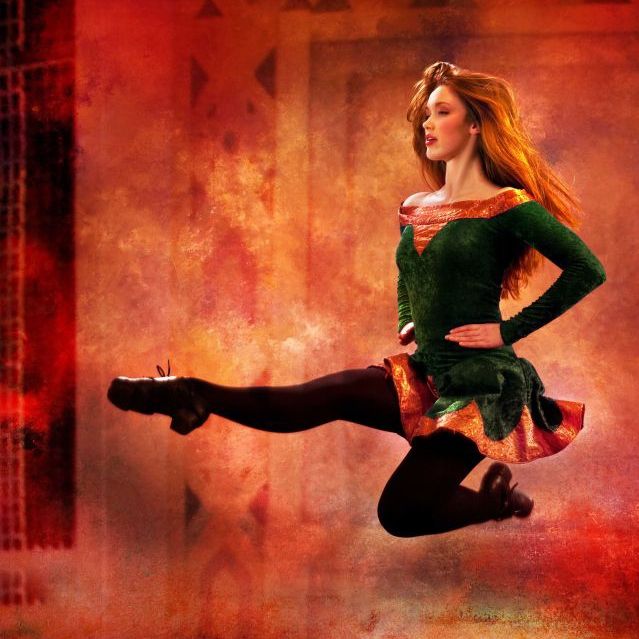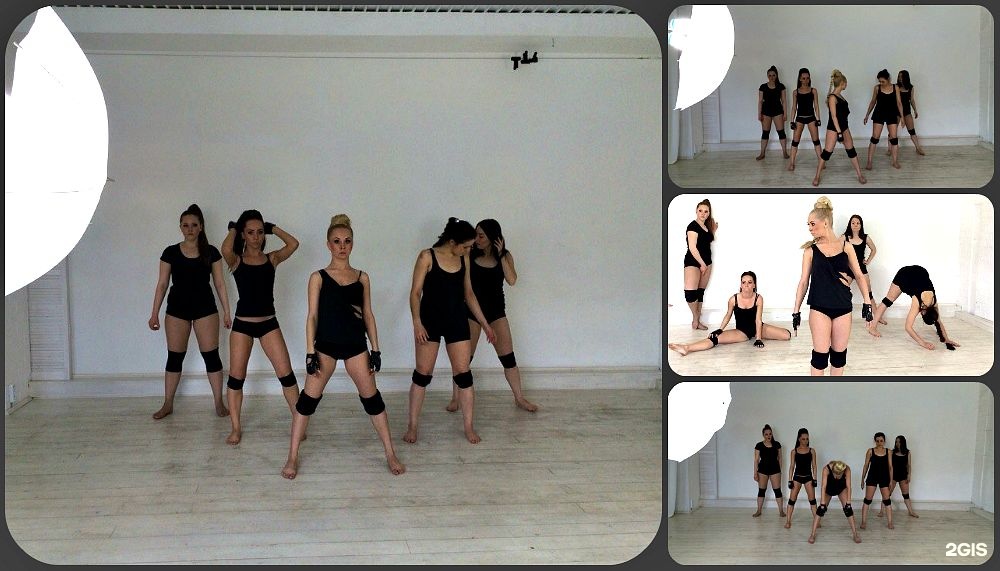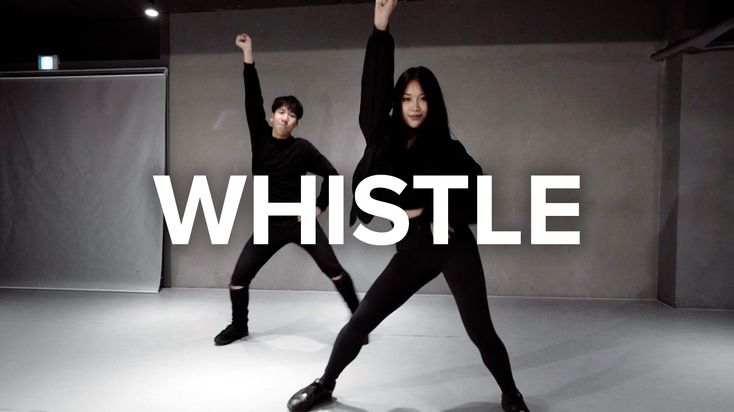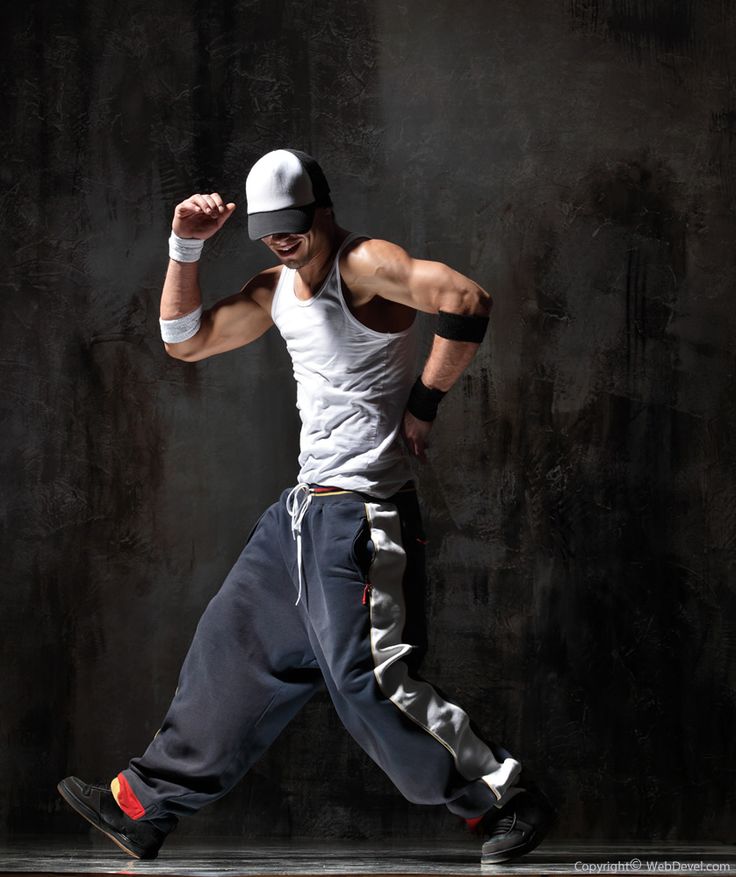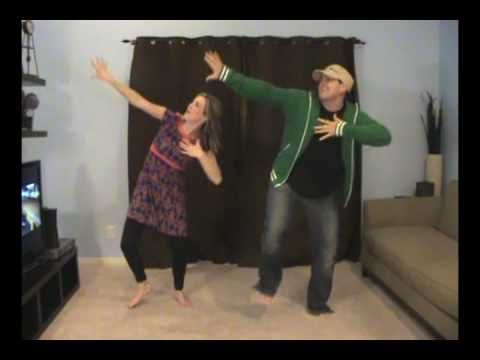How old is belly dancing
Belly dance History and origins, Turkey and Egypt. Raks sharqi.
The Terminology
The origin of the name ‘belly dance’ comes from the French Danse du ventre, which translates as “dance of the stomach”.
Sol Bloom is said to have been the first one to use the English term belly dance, for the dancers of the Chicago’s World Fair in 1893. Belly dance is also often referred to as “oriental dance” and also sometimes Raks sharqi.
This is Arabic for “Dance of the east”. The term Dance du ventre, from which belly dance originates, had originally racist connotations so there is currently a debate going on about whether the term belly dance should still be used.
According to some it should be avoided and replaced possibly with oriental dance, in order to dissociate this dance form from the misconceptions associated to it. According to others, the term belly dance is here to stay, it is the most known way of naming this dance form and it has now lost its racist connotations anyway.
The racist implications of the term belly dance are concerning, but I often find that, if I call it oriental dance, people think I am referring to dance of the Far East, from countries such as China, Korea or Japan.
The Arabic for oriental dance, raqs sharqi, seems lately to refer to one particular style, which does not include dances such as raqs shaabi, baladi or American tribal.
Andrea Deagon prefers to call this dance SITA (solo-improvised dance based on torso articulation).
While I like this term, I do not think that it is right for every type of what we call ‘belly dance’ as, for example, tribal is done in groups and also Raqs sharqi, when it is performed outside of its countries of origin, is sometimes performed in groups and to a choreography rather than being improvised.
Also, SITA could refer to many other dance forms that we would not consider ‘belly dance’, such as Moroccan Shikhat.
So, it is still hard, in my opinion, to define exactly what this dance genre includes.
Maybe we should not talk about ‘belly dance’ as one dance genre at all, but we should isolate different types of dance that so far have been bundled together, such as Raqs sharqi, American tribal, raqs baladi and saabi and so on and treat them as different genres which have some common roots.
Origins of the Dance
According to some, the dance form that today many call belly dance is extremely old and traces of it can be found up to 6,000 years ago, in some pagan societies who used to worship a feminine deity, to celebrate women’s fertility as something magic.
However, there is little evidence that early pagan rituals are in any way connected to belly dance.
This type of dance is supposed to be indeed good for preparing women’s body to give birth, but there does not seem to be proof of any link to ancient fertility rituals.
In spite of this, there has been a tendency, in the last 40 years, to associate belly dance with spirituality and the power of the feminine.
This may be due to the fact that the feminist movement, in the 1970s and 1980s in the USA, rediscovered belly dance as a form of dance that empowers women.
What we called today belly dance, seems to be the specific type of dance that comes from Turkey and Egypt.
By looking at the specific movements of belly dance, some say that there could have been an influence coming from India. Indeed some movements, such as the head slides, are found both in Indian dance and in belly dance.
Hence, it could be that populations migrating over the centuries from India to the Middle East and northern Africa brought their dance traditions with them, influencing the way local dances developed.
Also, I think that belly dance owns a lot, in terms of dance vocabulary, to African dances.
If we think about hip and chest shimmies and circles and body undulations, these are also present in African dances and in South American dances that derive from African traditions.
However, each dance tradition has changed and adapted these movements so that, for example, shimmies in belly dance have a different feeling from African shimmies.
A proper chronological and historical study of dance and movement should be done in order to confirm how and when these influences developed, but it is difficult for such an ephemeral product like dance.
Nevertheless, it could be attempted in the same way that linguists have studied the history of languages and traced migrations from ancient India to Europe with regards to the Indo-European languages, although movement did not leave a trace equivalent to written texts for languages.
This dance form, in the Middle East, has been a type of social dance since unmemorable times. It was and is danced when women gather together to socialize.
For example, my first belly dance teacher, whose family is from Iraq and Jordan, told me how, even today, women sometimes dance to it when they meet and also chose potential brides for their sons according to the way the girls dance.
In Egypt, dance has always been part of wedding celebrations, danced socially by people attending parties and professionally by performers who are paid to dance for special occasions.
This is the typical Baladi dance. Nowadays, the music played most commonly at weddings and social gatherings in Egypt is Shaabi.
The type of dance associated with shaabi music is very similar to baladi dance with hip articulations and quite grounded, but it does not have the same structure, as the music is different (shaabi music is composed by individual pop songs, while baladi is mainly instrumental music which is improvised but follows a set pattern, hence a baladi dance performance follows the same pattern translated into movement).
What we call today belly dance has always been also a form of public entertainment.
Travellers tribes, both in Egypt and Turkey, used to perform out in the streets.
Travellers are said to have come from India originally and then have migrated through modern Afghanistan and Iran to head some north, towards Turkey and Europe, and some south, towards northern Africa, including Egypt.
One way for travellers to earn a living was to perform to entertain people and they danced.
They probably brought with them their own dance traditions, but they must also have picked up the traditions and movement vocabulary of the places in which they travelled.
Turkey
The artists who travelled and performed in Turkey were called chengis.
We have record of them being active in Istanbul since the 1400s and they used to entertain particularly female audiences with dancing and singing.
They danced using intricate hip movements and torso articulations, shimmies, and they also used props, some of which we still use today, such as finger cymbals and veils.
Today chengis in Turkey still dance for tourists. Turkish dancing style has been heavily influenced by them.
Egypt
Performers in Egypt were not only women but also men (it was the European influence that later promoted female dancers at the expenses of men, as European travellers preferred to see women dance). The ethnic group that performed in public on the streets was called ghâwazî.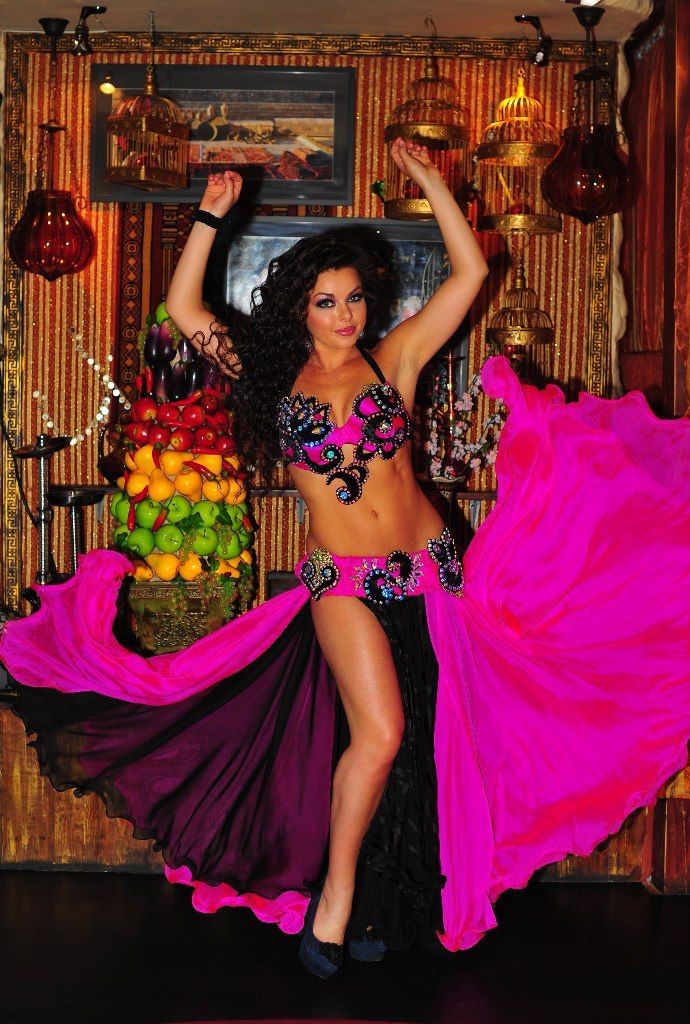
They used to dance in front of coffee houses and outdoors during public processions especially during saint’s day celebrations.
They would sing and dance and use various props, such as canes and swords. Public dance at first was not only tolerated by the authorities, but it was accepted as part of the tradition and also because performers were taxed and, therefore, brought in revenue.
However, in 1834, the political situation changed and the authorities gave into pressure from the most conservative fringes of society and outlawed public dancing in Cairo.
Hence, many performers continued dancing outside of Cairo, but the potential for making a good living outside the capital was slimmer.
Between 1849 and 1856, however, the ban was lifted so performers returned to Cairo.
The beginning of the XX century, around the 1920’s, saw the opening and flourishing of various nightclubs where dance was performed and were the audience was made up mainly by Europeans.
Hence, the dancing style changed because of the need to please a foreign audience and modern raqs sharqi was born.
One of the most famous nightclubs of this type was the one that belonged to Badiia Masabni in Cairo in the 1920s.
In this setting, dance was adapted to the stage, set choreographies and group performances were introduced and also there was a big influence from western types of dance, such as ballroom dancing and ballet. The costumes changed as well.
Up until that point dancers wore a wide long skirt, a shirt and a waistcoat.
From the 1920s dancers started wearing what is known today as the typical belly dancer’s costume (bedlah): a bra, a skirt, bare midriff, veils, a lot of glitter and beads.
Western Society
Middle Eastern dance spread into Europe and the USA at first because of European travellers who went to the Middle East and northern Africa from the late 1700s and through the 1800s.
Reactions from the part of these travelers were mixed.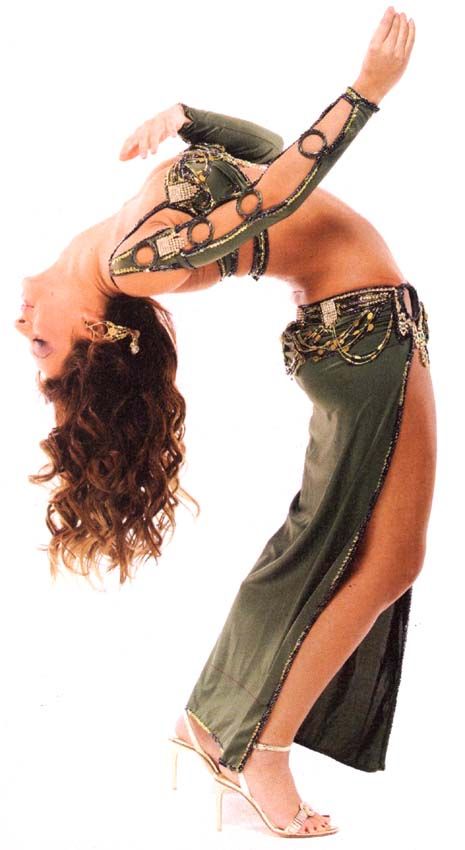 Some hated this dance, some loved it.
Some hated this dance, some loved it.
However, as the majority of these travelers were male, they did not have access to all types of performers, as some would only perform for women-only audiences.
They were only able to see performers on the street or those women dancers who were willing to perform privately in front of a male-only audience.
Hence the reason why dancers had a bad reputation among foreign visitors.
With the universal exhibitions, curiosities from all over the world were brought into Europe and the USA.
In particular, the 1893 Chicago World Fair was especially significant for the spread of belly dance in the west.
A dancer called Little Egypt performed there and she started a wave of controversy.
Some loved her movements but others were scandalised by them (think of what effect must have had a dance in which the torso moved freely, in a society where women wore corsets).
Many imitated her movements, but exaggerating the hips and torso movements in a way that many considered vulgar.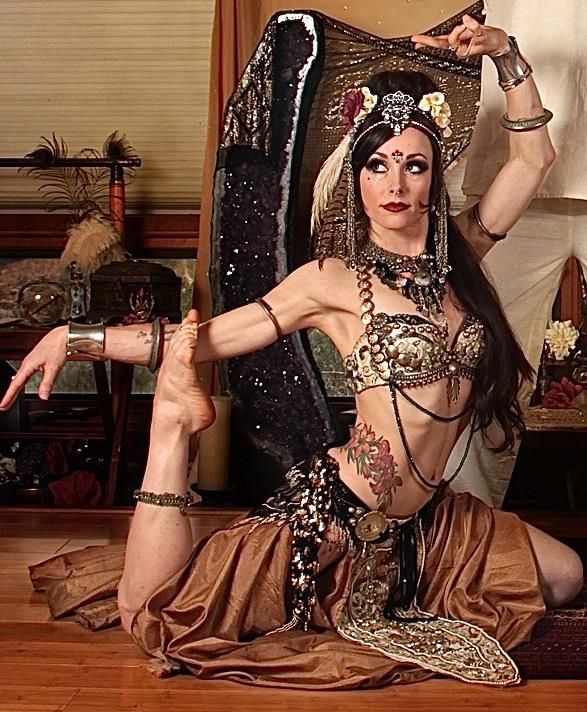
Also, western people had an imaginary picture of the orient in their minds, as a land of passion and moral ambiguity. Hence, oriental women and dance were seen in the same light.
This distorted image of the orient became a subject of many popular books and was promoted even further by Hollywood movies.
Belly dance also influenced burlesque in the 1800s and this contributed to confusion in the mind of many between these two genres.
In recent years, thanks especially to the feminist movement in the 1970s and 1980s, more and more women (in the USA first, then all over the world, including Europe, Oceania and the Far East) have discovered the empowering nature of this dance form for women.
As for men, they still dance folkloric styles in the countries of origin of belly dance, but not Raqs sharqi. In the west, there are some male belly dancers but still very few and far in between at the moment.
You can also learn more about belly dance from sites such as IAMED (International Academy of Middle Eastern Dance).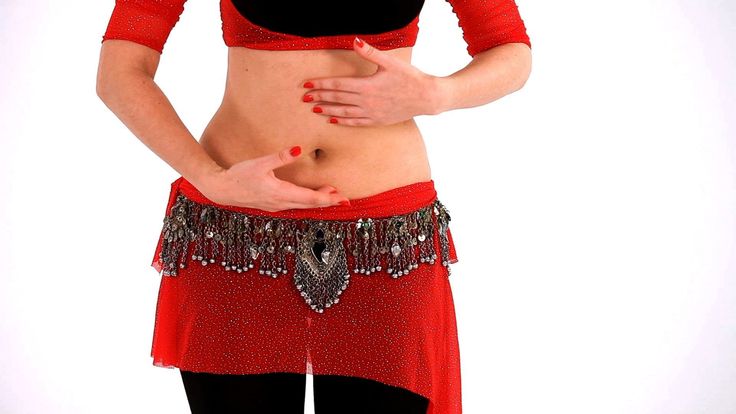
References
- Shay, A. and B. Sellers-Young (2003). “Belly Dance: Orientalism: Exoticism: Self-Exoticism.” Dance Research Journal 35(1): 13-37.
- Nieuwkerk,K. (1995), A Trade like Any Other: Female Singers and Dancers in Egypt. University of Texas Press.
- Dinicu, C (2013), You Asked Aunt Rocky: Answers & Advice about Raqs Sharqi and Raqs Shaabi. Rdi Publications.
- Lo Iacono (2019) – Dance as Living Cultural Heritage: A Transcultural Ethnochoreological Analysis of Egyptian Raqs Sharqi.
The Extraordinary History of Belly Dancing
The Extraordinary History of Belly Dancing | Belly Dance">
- Home
- Blog Home
Welcome to Bellydance.com's blog page where we share our love for bellydance with you and write about all things belly dance. Our blog will feature articles written by our team as well as articles from experts in the belly dance world. Our blog will include articles on costuming, trends, technique, tips, and much more.
Our blog will feature articles written by our team as well as articles from experts in the belly dance world. Our blog will include articles on costuming, trends, technique, tips, and much more.
Posted by Marta Schill on 4/30/2021 to Dancer Education
The extraordinary history of belly dance in the U.S. began in the 19th Century. Although there were dancers performing middle eastern stylings at the much smaller 1876 Centennial Celebration in Philadelphia, it was not until the 1893 Chicago World's Fair that this genre gained national attention. The term "belly dancing" is often credited to Sol Bloom, the Fair's entertainment director; he referred to the dance as danse du ventre, the name used by the French in Algeria. In his memoirs, Bloom states, "when the public learned that the literal translation was "belly dance", they delightedly concluded that it must be salacious and immoral ... I had a gold mine." Authentic dancers from several Middle Eastern and North African countries performed at the Fair, including Syria, Turkey, and Algeria—but it was the dancers in the Egyptian “Streets of Cairo” exhibit who gained the most notoriety.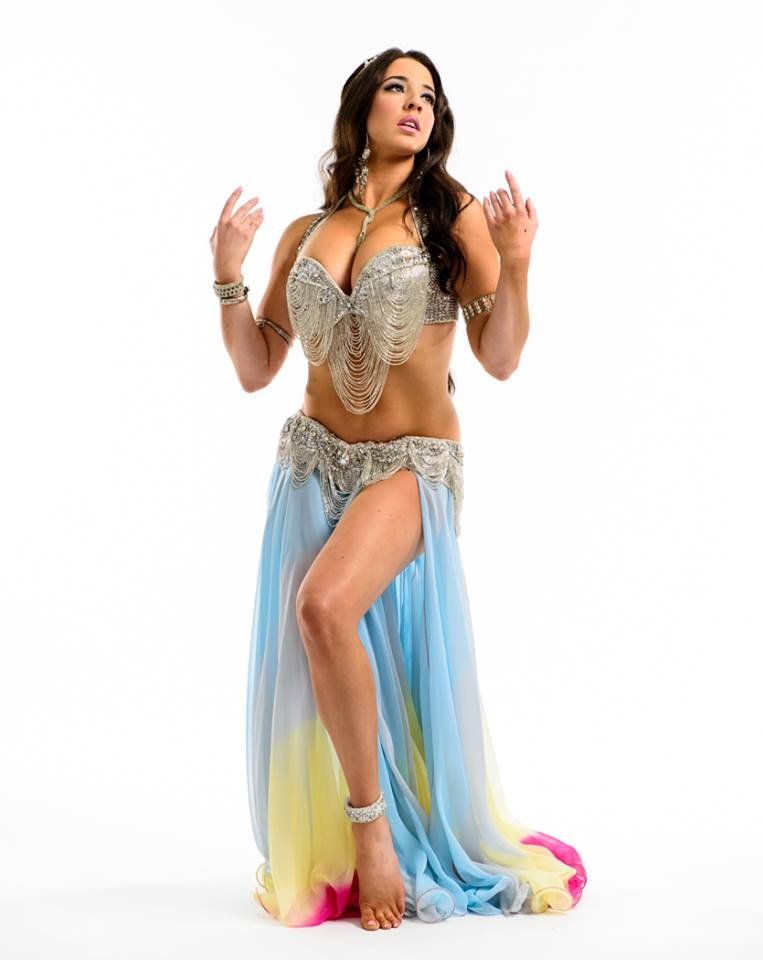 The fact that the dancers were not corseted and gyrated their hips was shocking to Victorian sensibilities. Mr. Bloom took advantage of the publicity, and announced that women and children would not be allowed in this theater! Men attended in droves.
The fact that the dancers were not corseted and gyrated their hips was shocking to Victorian sensibilities. Mr. Bloom took advantage of the publicity, and announced that women and children would not be allowed in this theater! Men attended in droves.
Who was the first popularized bellydancer? There were no soloists, but it is claimed that a dancer nicknamed Little Egypt stole the show. Some believed that her “pet name” originated because her real name was too difficult to pronounce.
The popularity of these dancers subsequently spawned dozens of imitators, many of whom claimed to be from the original “Streets of Cairo” show. The victorian society continued to be scandalized by the dance, and dancers were sometimes arrested. The dance was nicknamed the "hoochie coochie", or the shimmy and shake. “Belly Dance” drew men to burlesque theaters, to carnivals, and circus lots. Everywhere, dancers claiming to be “Little Egypt” sprang up, yet most knew nothing about Middle Eastern music or dance.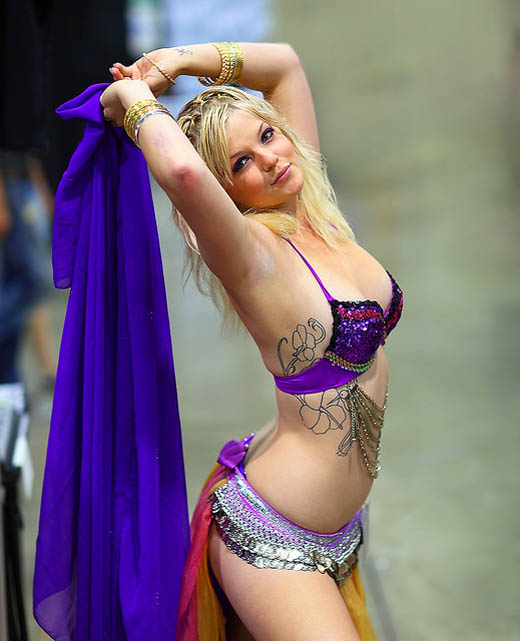
Thomas Edison made several films in the 1890s. They included a Turkish dance, and “Princess Rajah” from 1904, featuring a dancer playing zills and doing "floor work.” Choreographer Ruth St. Denis also used Middle Eastern-inspired dance in the film Intolerance, her goal being to lift dance to a respectable art form at a time when dancers were considered to be women of loose morals. Hollywood began producing films such as The Sheik, Cleopatra, and Salomé, to capitalize on Western fantasies of the Orient. Despite these popular outlets, Bellydance remained on the fringes of respectability in America for decades.
Moving forward, the 1960s were hallmarked by refreshing freedom in popular dance - the tradition of “couple dancing” was broken, and huge venues touting light shows and “acid rock” became the rage. Creative rock bands from the Beatles to the Kaleidoscope infused East Indian and Mid-Eastern sounds into current Western music. Clothing styles (for both sexes) exploded with new ideas, new looks, new freedom. These factors, as well as a passion for international folk music and dance, fed a new wave of fascination for those in North America.
These factors, as well as a passion for international folk music and dance, fed a new wave of fascination for those in North America.
In the United States, interest in Bellydance came into its own during the ’70s. To answer and to feed the demand, a spate of books were written, magazines were founded, record albums were produced, and classes & seminars cropped up nationwide.
Subsequently, the ’80s brought profound change to the Mid-Eastern dance scene from several sources: Politically, the Lebanese Civil War had no sooner taken its toll than the revolution in Iran became front-page news, replaced by the specter of hostages taken from the American embassy in Iran. Xenophobia erupted, clubs closed (some even burned) and the general popularity of belly dance plummeted. Of course, people with a true love for this extraordinary genre remained, and as luck would have it, technology emerged that would prove to be a defining moment in all dance: the Video! By the end of the ’80s middle eastern dancers had, through this medium, an incredible spectrum of knowledge in styles, costuming, and music from which to mold their repertoire.
In the bellydance field, video contributed greatly to the huge popularity of the “Egyptian Style” as the rage of the 90’s - so different in the concept that some dance competitions created a new category devoted to that venue. Diversity, however, often leads to dissension, and controversy flew regarding the rather strict parameters of the Egyptian style. Many dancers felt the “loss” of aspects of Bellydance embraced in Turkey, Greece, and some Arabic countries: Veil dancing, Floor dancing, and Karshilama (9/8) were virtually nonexistent or relegated to folkloric performances. Many dancers mourned their loss.
Then, the new Millennium dawned - and the pendulum swung. All that is old is new again, but with a heightened perspective and an elevated level of information. Cymbals, veil, floor dancing, and 9/8 all became sought-after skills, and the widening spectrum of Middle Eastern dance had an assortment of new looks - from American Tribal all the way to Rock Fusion.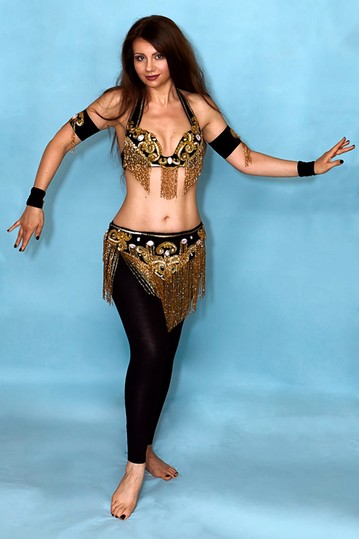 As in all art forms, the evolution of Bellydance has been an exciting journey every step of the way!
As in all art forms, the evolution of Bellydance has been an exciting journey every step of the way!
MARTA SCHILL
Dancer, Author, Musician, Producer
Ms. Schill is the co-author of “The Compleat Belly Dancer,” a book that became a national bestseller published by Doubleday & Co., as well as two sequels; “The Finishing Touch” and “The Teachers Guide.” She also co-authored and starred in a videodisc produced by MCI (Universal Studios) as well as writing and producing an instructional videotape trilogy entitled “Belly Dance: Fine Art of the East.” Marta has created choreography for such stars as Dinah Shore and Barbra Streisand, and acted in and created dance routines for TV and motion pictures. In the past two decades, Marta Schill has created major productions to bring the total spectrum of the American Middle East dance community (Cabaret, Tribal, Fusion, etc.) together for the public to enjoy.
Photo credit for Marta’s photo: Mike Simpson
Dancer’s in blog image post: Little Egypt, Zahra Zuhair, Sadie Marquardt
Previous Post
Next Post
TOP
0 Items
Are you sure you want to go to this link?
Belly dance tournament rules
GENERAL PROVISIONS
The age group of participants is determined by the senior performer. The exception is the age group "children" where one dancer under 10 years old can participate.
The exception is the age group "children" where one dancer under 10 years old can participate.
In all disciplines of the "children" age group, the use of acrobatic elements without support on the arm is prohibited.
Responsibility for health and absence of injuries during the performance of dance elements rests entirely with the coaches and leaders of dance groups.
It is forbidden to use identical choreographies in different disciplines and categories
In the case of using props, dancers must independently take out the props in one step, the team is allowed to help clean up the props.
Do not use substances that stain the floor or leave debris that interferes with other performers.
As a general rule: all dancers in a group must be on the floor and move at the same time.
* BELLYDANCE ORIENTAL
Description: dance discipline Bellydance Oriental - oriental dance with a predominance of classical, scenic Raks sharki, fragments of folk dances and styles (folklore dance Bellydance) are allowed, but they should not dominate.
Techniques used: Egyptian belly dance technique is taken as a basis (oriental style not less than 90%). A small inclusion of classical choreography or jazz modern, elements or steps of ballroom latin is acceptable (no more than 10%). Features of the performance of classical oriental dance in Russia - the stage version of "raks sharki", it allows for complex choreography, various patterns and complex transitions from one element to another. However, the elements of technique must be performed correctly, clearly, to the music, in accordance with the style of the chosen composition.
The musical accompaniment in the Bellydance Oriental discipline is dominated by Egyptian or Middle Eastern instrumental music or song, the use of music in a "pop" arrangement is allowed if the dance and image meet the above definition.
In all age categories it is possible to change costume between rounds, but not required. Costume for children: traditional or stylized top, shalwars or skirt.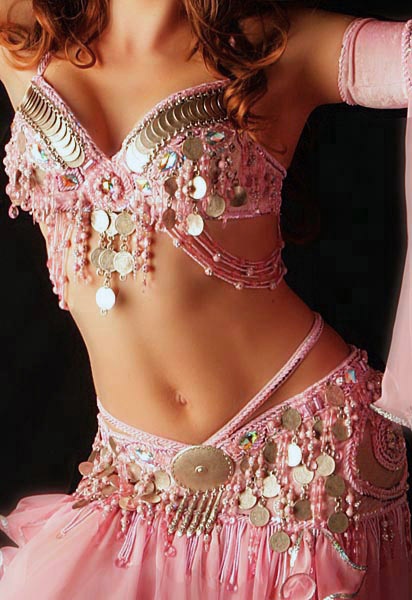 The composition and image of the performer must correspond to the age category in which he takes part.
The composition and image of the performer must correspond to the age category in which he takes part.
Music: for the competition composition, it may include interanse, tarab, oriental or pop balyadi, pop Arabic lyrical song, oriental shaabi, modern oriental instrumental music, including song melodies, modern style with inclusion tabla or remix. As music for children, juniors, adult beginners and seniors, a musical composition with a leading basic rhythm, without drops, can be used. Live music and vocals are not permitted. For an open class - an instrumental musical composition Raks sharki with a change of rhythms or a complex rhythm, "tabla" solo. Live music and vocals are not permitted. In sub-runs, the musical composition must change in each subsequent sub-run. In the age group Children, it is not recommended to use musical accompaniment with vocals.
Characteristics: the construction of the composition must comply with the general laws of stage dance, as well as the style of the chosen music. Elements of technology should be logically combined and pass into each other in full accordance with the chosen musical accompaniment. The dance pattern is created by the director in accordance with the creative concept and the laws of stage choreography. The creation of the image of an oriental beauty is welcome. Make-up should be stage, bright, aesthetic. In the Oriental style, loose hair is accepted, the use of wigs or hairpieces is allowed. Children are welcome to have children's hairstyles.
Elements of technology should be logically combined and pass into each other in full accordance with the chosen musical accompaniment. The dance pattern is created by the director in accordance with the creative concept and the laws of stage choreography. The creation of the image of an oriental beauty is welcome. Make-up should be stage, bright, aesthetic. In the Oriental style, loose hair is accepted, the use of wigs or hairpieces is allowed. Children are welcome to have children's hairstyles.
The costume must match the chosen image and music. Skirts that fully open the hips and underwear are prohibited; shorts or shorts should be worn under a transparent skirt.
Age categories:
Baby up to 6 years old
Children 7-9 years old
Juvenal 10-12 years old
Uniors 13-15 years old
Youth 16-18
Adults 19-34 years old
Signora 35- 50 years old
Grandseigneurs 51 years old and older
Course of the competition: In the qualifying rounds, the dancers are divided into sets and dance to the music of the organizer.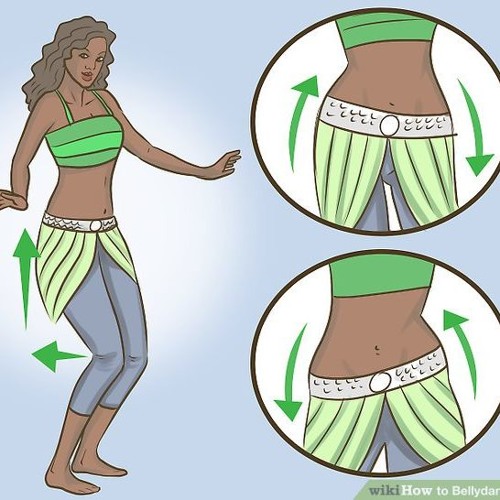 Each entry dances first all together, then in subsets and again all together.
Each entry dances first all together, then in subsets and again all together.
Prohibited: acrobatics, strip-plastic, ground floor, supports (elevators), use of props and accessories except for a cane, sagat, "classic shawl". The use of "wings" is allowed if they are not the main element of the action in the construction of the composition, but are used as an entre at the beginning or at the end of the composition. In the age group of children and juveniles, the use of bras in costumes, open areas of the abdomen and hips (in these places the use of mesh and guipure is allowed), bright makeup, as well as the use of musical accompaniment: tarab, love lyrical song. In the age group, children are prohibited from performing the Iraqi kouliya dance, using the stalls, using piercing, cutting objects (knives, swords, etc.). Use of open flames, liquids or other substances that could wet, damage or render the floor/stage unsafe, use of animals.
Duration:
Duration of performances to the music of the organizer (selection round) 1’00”.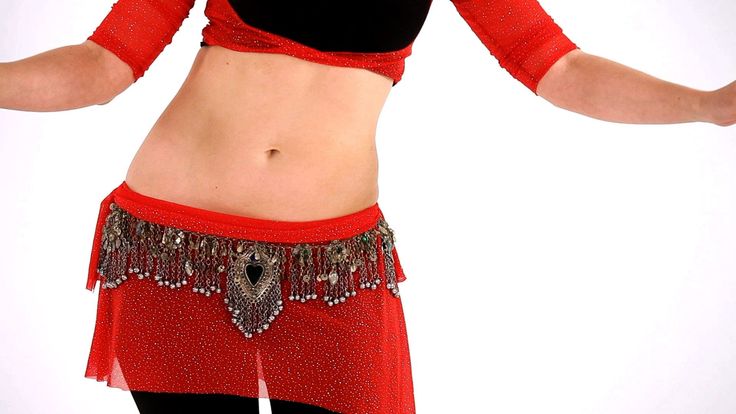
for own music (qualifying tour)
solo 1'00 ”
duet 1'00” - 1'30 ”
Small group 1'30” - 2'00 ”
forms 2'00” - 3 '00”
Final - all performances to the music of the artist
Beginners 1'00 ” - 2'00”
Open class
solo 1'45 ” - 2'15”
duets 1'45 ” - 2'15”
Malaya group 2'00 ” - 2 - 2 '30 ”
forms - 2'30” - 4'00 ”
Production - 3'00” - 5'00 ”
*BELLYDANCE SHOW
Description: dance discipline Bellydance show is an oriental dance that includes any other dance styles, but the Bellydance technique must be seen throughout most of the composition (70%). You can use accessories (knives, swords, etc.) and any costume options. Supports (elevators) are allowed - in all age categories, except for children. Gymnastic elements are allowed in all age categories. It is allowed to use paraphernalia and decorations, which must be taken out by a participant or a representative of his team. Removal should be carried out in one step. The performance should be logical, spectacular, original, reflect the idea of the director. The technique and image of oriental dance should be logically woven into the composition, be explicable and understandable to the viewer.
Removal should be carried out in one step. The performance should be logical, spectacular, original, reflect the idea of the director. The technique and image of oriental dance should be logically woven into the composition, be explicable and understandable to the viewer.
In duets, the composition must include at least 5 rebuildings, the interaction of the dancers, the development of the stage space, the originality of the idea are evaluated.
In small groups and formation: there must be at least 5 lane changes. All dancers from the first to the last moment of the dance must be on stage. The length of solo parts can be no more than 20 seconds for the entire composition.
In all age categories it is possible to change costume between rounds, but not required. Costume for children: traditional or stylized top, shalwars or skirt. The composition and image of the performer must correspond to the age category in which he takes part.
Music: Any musical styles may be used in musical accompaniment.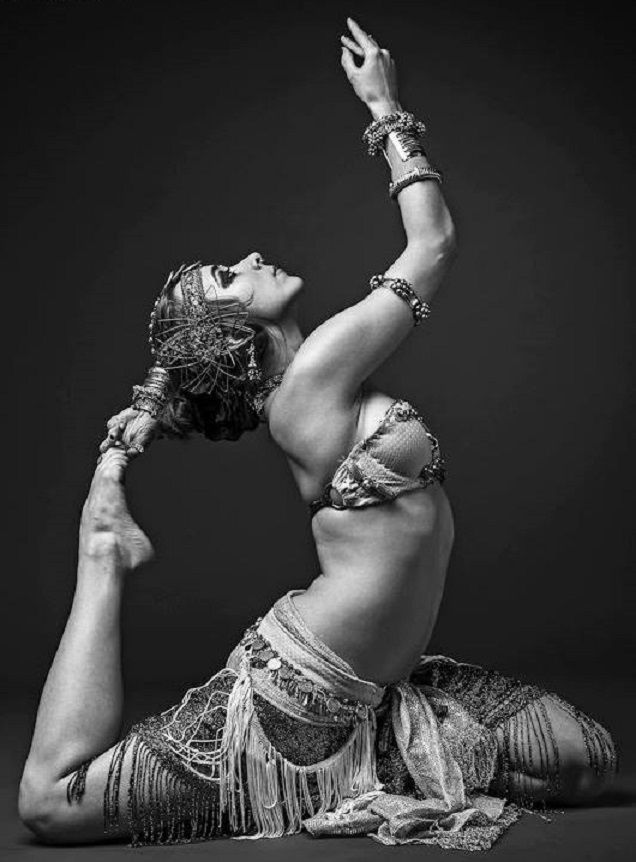
Characteristics: the construction of the composition must comply with the general laws of stage dance, as well as the style of the chosen music. Elements of technology should be logically combined and pass into each other in full accordance with the chosen musical accompaniment. The dance pattern is created by the director in accordance with the creative concept and the laws of stage choreography. The creation of the image of an oriental beauty is welcome. Make-up should be stage, bright, aesthetic. In the Oriental style, loose hair is accepted, the use of wigs or hairpieces is allowed. Children are welcome to have children's hairstyles.
The costume must match the chosen image and music. Skirts that fully open the hips and underwear are prohibited; shorts or shorts should be worn under a transparent skirt.
Age categories:
Baby up to 6 years old
Children 7-9 years old
Juvenal 10-12 years old
Uniors 13-15 years old
Youth 16-18
Adults 19-34 years old
Signora 35- 50 years old
Grandseigneurs 51 years and older
Forbidden: In the age group of children and juveniles, the use of bras, open skirts, skirts with a slit above the middle of the thigh, bright makeup in costumes. In the age group, children are prohibited from performing the Iraqi dance kouliya, using the stalls, using piercing, cutting objects (knives, swords, etc.). Use of open flames, liquids or other substances that could wet, damage or render the floor/stage unsafe, use of animals.
In the age group, children are prohibited from performing the Iraqi dance kouliya, using the stalls, using piercing, cutting objects (knives, swords, etc.). Use of open flames, liquids or other substances that could wet, damage or render the floor/stage unsafe, use of animals.
Duration:
for own music (qualifying tour)
solo 1'00 ”
duet 1'00” - 1'30 ”
Small group 1'30” - 2'00 ”
forms 2 ' 00” – 3'00”
Production – 3'00” – 5'00”
Final – all performances with music by artist
solo 1'45 ” - 2'15”
duets 1'45 ” - 2'15”
Small group 2'00 ” - 2'30”
forms 2'30 ” - 4'00”
Production 3'00 ” - 5'00”
*Bellydance Folk
Description: The Bellydance Folk discipline uses the folk dancing of Egypt, the countries of the Maghriba (North Africa), the countries of the Middle East, Iran, reflecting the national characteristics, reflecting national characteristics, customs, habits, music, costume, history of the community of people living in a given area, region, country.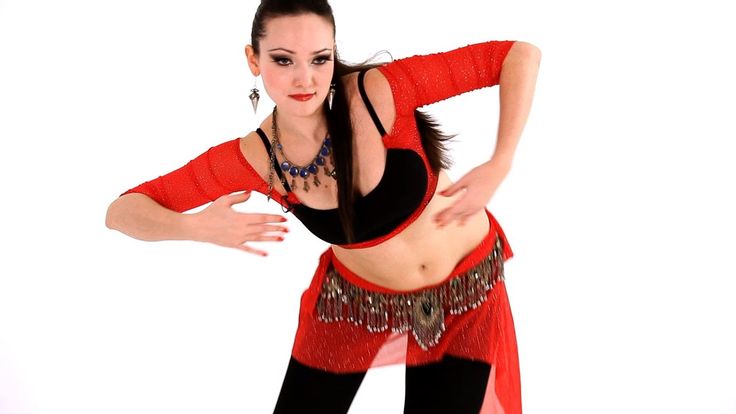 Folklore dance should be performed to the music of a given nationality, in a costume corresponding to this style, high slits on skirts or galabeys are prohibited and contain characteristic manners, movements, dramaturgy of this particular folklore direction.
Folklore dance should be performed to the music of a given nationality, in a costume corresponding to this style, high slits on skirts or galabeys are prohibited and contain characteristic manners, movements, dramaturgy of this particular folklore direction.
In duets, the composition must include at least 5 rebuildings, the interaction of the dancers, the development of the stage space, the originality of the idea are evaluated.
In small groups and formation: there must be at least 5 lane changes. All dancers from the first to the last moment of the dance must be on stage. The length of solo parts can be no more than 20 seconds for the entire composition.
In all age categories it is possible to change costume between rounds, but not required. Costume for children: traditional or stylized top, shalwars or skirt. The composition and image of the performer must correspond to the age category in which he takes part.
Characteristics: the construction of the composition must comply with the general laws of stage dance, as well as the style of the chosen music.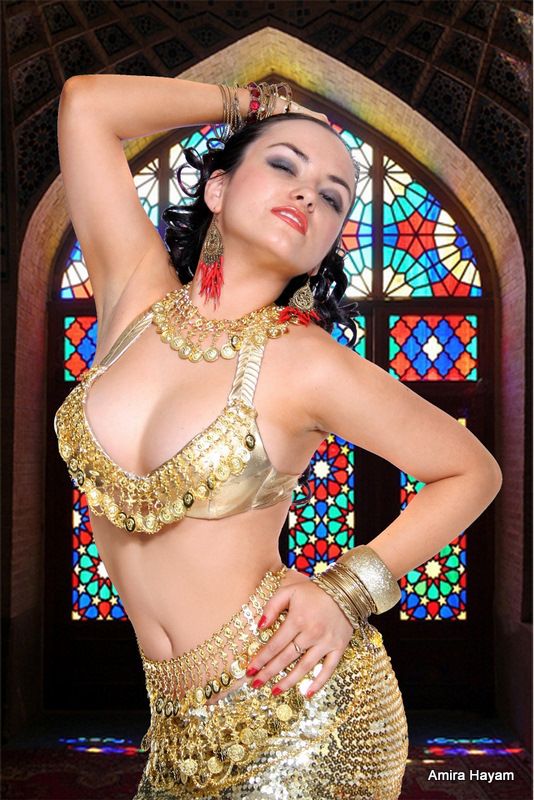 Elements of technology should be logically combined and pass into each other in full accordance with the chosen musical accompaniment. The dance pattern is created by the director in accordance with the creative concept and the laws of stage choreography. The creation of the image of an oriental beauty is welcome. Make-up should be stage, bright, aesthetic. In the Oriental style, loose hair is accepted, the use of wigs or hairpieces is allowed. Children are welcome to have children's hairstyles.
Elements of technology should be logically combined and pass into each other in full accordance with the chosen musical accompaniment. The dance pattern is created by the director in accordance with the creative concept and the laws of stage choreography. The creation of the image of an oriental beauty is welcome. Make-up should be stage, bright, aesthetic. In the Oriental style, loose hair is accepted, the use of wigs or hairpieces is allowed. Children are welcome to have children's hairstyles.
The costume must correspond to the chosen image of a particular folklore direction and music. Skirts that fully open the hips and underwear are prohibited; shorts or shorts should be worn under a transparent skirt.
Age categories:
Baby up to 6 years old
Children 7-9 years old
Juvenal 10-12 years old
Uniors 13-15 years old
Youth 16-18
Adults 19-34 years old
Signora 35- 50 years old
Grandseigneurs 51 and older
Forbidden: In the age group of children and juveniles, the use of bras, open skirts, skirts with a slit above the middle of the thigh, bright makeup, as well as the use of musical accompaniment: tarab, love lyrical song in costumes.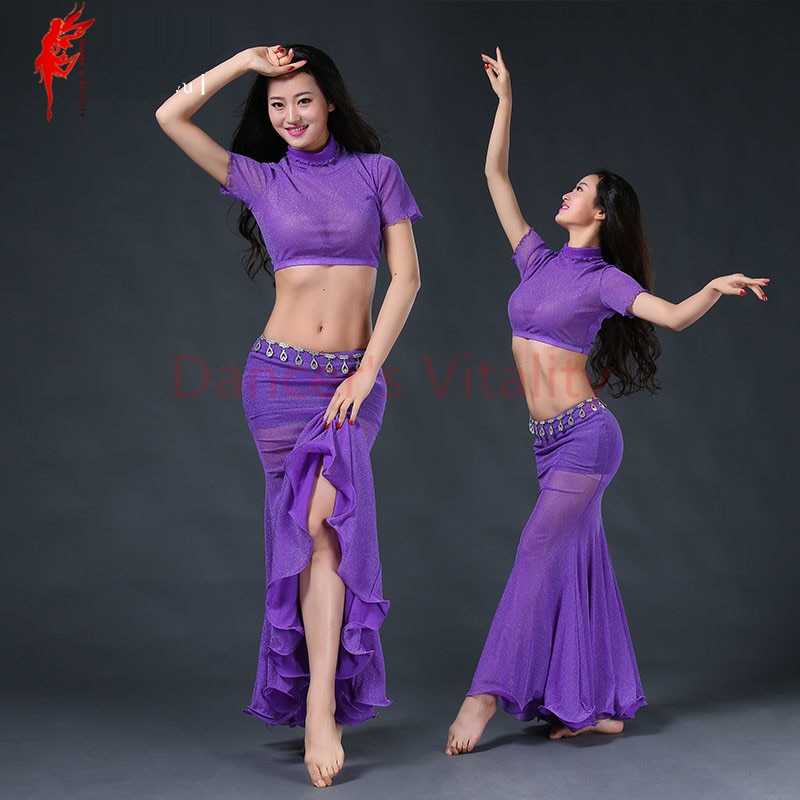 In the age group of children and juveniles, it is forbidden to perform the Iraqi style of koulia, use the stalls, use piercing, cutting objects (knives, swords, etc.). Use of open flames, liquids or other substances that could wet, damage or render the floor/stage unsafe, use of animals.
In the age group of children and juveniles, it is forbidden to perform the Iraqi style of koulia, use the stalls, use piercing, cutting objects (knives, swords, etc.). Use of open flames, liquids or other substances that could wet, damage or render the floor/stage unsafe, use of animals.
Duration:
for own music (qualifying tour)
solo 1'00 ”
duet 1'00” - 1'30 ”
Small group 1'30” - 2'00 ”
forms 2 ' 00” – 3'00”
Production – 3'00” – 5'00”
Final – all performances with music by artist
solo 1'45 ” - 2'15”
duets 1'45 ” - 2'15”
Small group 2'00 ” - 2'30”
forms 2'30 ” - 4'00”
Production . Costume for children: traditional or stylized top, shalwars or skirt. The composition and image of the performer must correspond to the age category in which he takes part.
*TABLA - SOLO
Description: The dance is accompanied by a darbuka (drum) solo, there may be an instrumental inclusion, but the drum must solo throughout the performance.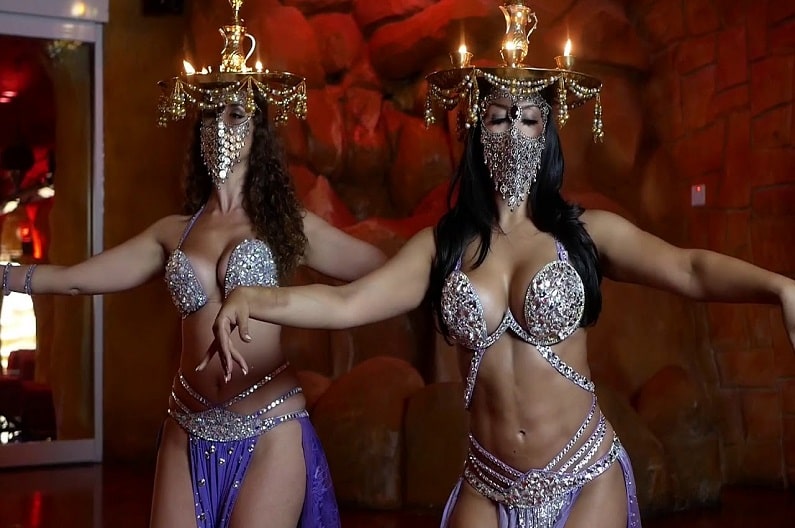
The dance uses the bellydance technique, which should be dominant, elements of show, jazz, classical choreography are allowed, provided that the oriental image is preserved.
The costume must match the intended image, trousers, harem pants, jeans, short skirts, modern style are allowed, a traditional oriental dance costume can be used. The costume should reflect the idea of the dance, match the image and the music.
Characteristics: The composition must comply with the general rules for constructing a competitive dance, have an exit, main part, culmination, finale.
Age categories:
Children 7-9 years old
Juvenal 10-12 years old
juniors 13-15 years old
Youth 16-18
Adults 19-34 years old
Signora 35-50 years old
Grandesyni 51 year and older
Prohibited: In the Baby category, it is forbidden to perform tabla solo, in the children category, prolonged shaking that seduces vulgar movements is prohibited.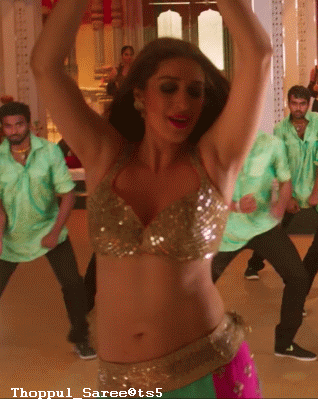 In children, frank cuts are prohibited, underwear should not be visible, bras, transparent skirts and harem pants are prohibited.
In children, frank cuts are prohibited, underwear should not be visible, bras, transparent skirts and harem pants are prohibited.
Duration:
Code of Organizer Music 1'00 ”
Final: Your Music 1'30 '' - 2'00 ''
* Nominations“ Debut ”
1. All tours are held to the music of the organizer (maksum, saidi or balladi).
Dancers are divided into sets. Each run dances first all together, then in subsets and again all together. The duration of each run and subset is 1 minute.
2. According to the results of the qualifying round, all participants are divided into three groups: Bronze, Silver and Gold finals in which they compete for prizes. 9 Be plastic!
Do you dream of taking up dancing, but don't know what kind? I hope that after reading the article, your choice will fall on belly dance (belly dance, bellydance, belly dance, bellydance).
An article about belly dancing from our teacher Alexandra Usanova.
Dear girls and women, our desires show us the path we should follow, so we should not neglect them. It is never too late to start dancing classes, they will certainly change your life for the better. In the article, I, Alexandra Usanova, share my own experience, I hope it will help you make your choice in favor of dance, and it will be great if this dance becomes BELY DANCE.
Our dance school "Impromptu" provides training in belly dance (belly dance, bellydance, belly dance, bellydance) for both beginners and belly dance classes for advanced dancers. Belly dance lessons (belly dance, bellydance, belly dance, bellydance) in our dance studio are designed for both adults and children.
Extremely useful for beauty and health temperamental oriental dance. Belly dancing is extremely popular today. Dancing in oriental style is modern and just cool. Those who believe that the main thing in this dance is the STOMACH, it is definitely worth a try to dispel this completely unfair myth.
We all want to stay young, beautiful, sexy and desirable as long as possible. For example, I am very responsible about my appearance. Therefore, all my adult life I have been disciplinedly engaged in various types of sports exercises: I swim in the summer, ski in the winter, and the like. I try my best to eat right. For six years I went to shaping classes, where my subcutaneous fat folds were measured monthly, my daily diet was prescribed, and in the hall three charming girls from the TV showed me how and how many times I need to lift this or that limb. To be honest, in the classroom I was often too lazy to do some unloved exercises. For example, I could not stand, standing on all fours, raising my leg in a thousand and one ways to strengthen the muscles of the thighs and buttocks from all sides, and every now and then I looked at the watch dial: “Well, when will these endless 45 minutes expire?”. In general, I worked on myself and diligently strengthened my muscles and willpower. The decision to take up dancing matured in me for about half a year.
In general, I worked on myself and diligently strengthened my muscles and willpower. The decision to take up dancing matured in me for about half a year.
And finally, I decided to come to the dance club to see Belly Dance classes. For some reason, I decided that with my not very fragile complexion, if I do dance, then not ballet, really! I had a belly and I, taking it with me, came to my first lesson. I looked with horror at the teacher standing in front of me: She absolutely lacked the same one: STOMACH! "Something is not right here, someone has committed a forgery of the teacher!" - I guessed, but the dance lesson had already begun, and I had to try to repeat the twists and turns of the head, chest, hips, arms and some other places, which, as it turned out, can also, in principle, move in different directions.
To be honest, I didn’t have anything like that spinning, spinning or moving much. I felt like a clumsy hippo. I couldn’t even believe that an hour and a quarter had already passed, when the teacher made a farewell bow and loud applause from the students, and my first belly dance lesson was over. After the lesson, she approached our charmingly fragile and elegantly graceful teacher and asked: "Can, in principle, the most ordinary average person, like me, learn to dance like you?" It's been 10 months since that first session. I just fell in love with this dance and incendiary oriental rhythms. I began to move all the available parts of the body. I embroidered a dance costume with my own hands, with all the frills and bells and whistles. It’s hard for me to believe this myself, since these hands have not produced anything worthwhile in my entire almost thirty-year life. I went to different teachers and found with joy and satisfaction that some of them have small sexy tummies. Only the presence of these tummies was not a necessary and sufficient condition for a virtuoso performance of an oriental dance. All movements of the stomach, if they are done professionally, look exciting and sexy on both very slender girls and chubby dancers. And in general, for me the problem of excess weight ceased to exist. Firstly, I lost 6 kilograms in a completely imperceptible way. And secondly, I adore that small appetizing tummy, which, fortunately, still remains. After all, Arabic shakes look so impressive on it. It is a pity that most likely, almost nothing will remain of him soon. What I have absolutely no regrets about is the disgusting cellulite that left my body thanks to all the same shaking.
I went to different teachers and found with joy and satisfaction that some of them have small sexy tummies. Only the presence of these tummies was not a necessary and sufficient condition for a virtuoso performance of an oriental dance. All movements of the stomach, if they are done professionally, look exciting and sexy on both very slender girls and chubby dancers. And in general, for me the problem of excess weight ceased to exist. Firstly, I lost 6 kilograms in a completely imperceptible way. And secondly, I adore that small appetizing tummy, which, fortunately, still remains. After all, Arabic shakes look so impressive on it. It is a pity that most likely, almost nothing will remain of him soon. What I have absolutely no regrets about is the disgusting cellulite that left my body thanks to all the same shaking.
It cannot be said that all the movements came quickly and easily to me. The spine completely refused to bend in waves, the hips moved very sluggishly, and the chest did not want to move in a circle. Instead of moving the head to the right and left, some stupid convulsive twitching of the head turned out. There was no question of doing that famous pas performed on the floor, in which the dancer, constantly "dancing with her stomach", gradually lays her back on her own heels, and then, in the same way, very slowly rises. I looked at a woman of about 55 in a funny tracksuit with outstretched knees, who was trying to repeat this pas, and gloated to myself: “If I, in my 29, unable to lie down in the “chicken tobacco” position, then why should she try? hands. Do not believe it, but next to me this same woman performs this step, only already in a beautiful red dance costume. Looking at her, I feel admiration and begin to understand that life does not even end with retirement, and for some, "maybe it's only just beginning. And than sitting down to gossip on a bench, it's better to finally take care of yourself. Then, instead of turning into hunched-over grannies in headscarves reading the Health magazine, you can remain a stylish and elegant woman until the most respectable years.
Instead of moving the head to the right and left, some stupid convulsive twitching of the head turned out. There was no question of doing that famous pas performed on the floor, in which the dancer, constantly "dancing with her stomach", gradually lays her back on her own heels, and then, in the same way, very slowly rises. I looked at a woman of about 55 in a funny tracksuit with outstretched knees, who was trying to repeat this pas, and gloated to myself: “If I, in my 29, unable to lie down in the “chicken tobacco” position, then why should she try? hands. Do not believe it, but next to me this same woman performs this step, only already in a beautiful red dance costume. Looking at her, I feel admiration and begin to understand that life does not even end with retirement, and for some, "maybe it's only just beginning. And than sitting down to gossip on a bench, it's better to finally take care of yourself. Then, instead of turning into hunched-over grannies in headscarves reading the Health magazine, you can remain a stylish and elegant woman until the most respectable years.
You can also save money on medicines, massages, beauty parlors and plastic surgery services by belly dancing. After all, oriental dance (belly dance) is a unique health system. Languidly smooth movements gently and unobtrusively straighten the spine. The alternation of elements of oriental dance: plastics, blows and shaking makes muscles and ligaments more elastic and mobile. The skin becomes elastic and beautiful, cellulite disappears. Strengthened work with the hips not only trains the flat muscles of the abdomen, but also massages the pelvic organs. Belly dancing strengthens the abdominals. In addition, due to exercises on the muscles of the perineum, the sexual potency of a woman increases. Personally, my backache disappeared, which had haunted me for two years now and sometimes forced me to freeze in an indecent pose. The tension in the neck and in the shoulder section disappeared. Improved gait and posture. One woman from the beginners complimented me and said that I move very easily and gracefully, and even when I put a cup of tea to my lips in a cafe after class, I coquettishly stick out my finger.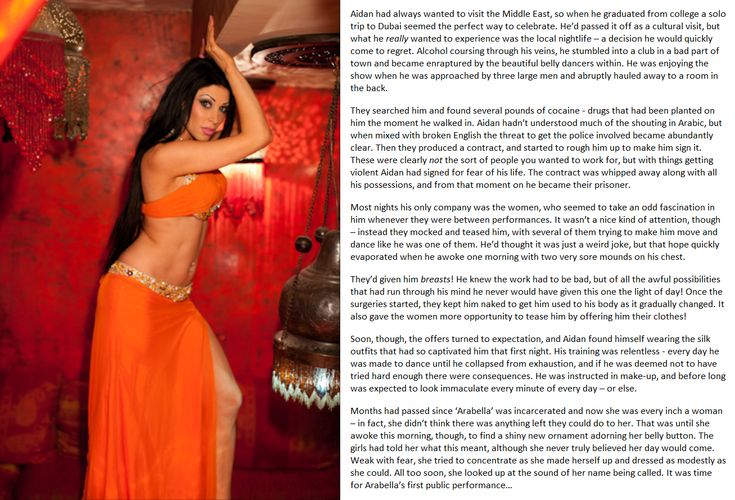 And yet, after a lesson in the locker room, I heard how one middle-aged student whispered to another that her intestines function much better after class, which has a beneficial effect on the complexion and skin condition in general, and an incredible rejuvenating effect is observed. I still do not quite understand why oriental dance is most often called "belly dance". After all, it is rather a "dance of the spine." It is the movements of the spine that help to perform such exciting and erotic waves with the stomach and hips. In oriental dance, as in no other dance or form of sports exercise, all parts of the spine from the back of the head to the coccyx are easily and naturally developed, blood circulation improves and, through signals emanating from the spinal cord, there is a healing effect on the internal organs and on the whole body as a whole. .
And yet, after a lesson in the locker room, I heard how one middle-aged student whispered to another that her intestines function much better after class, which has a beneficial effect on the complexion and skin condition in general, and an incredible rejuvenating effect is observed. I still do not quite understand why oriental dance is most often called "belly dance". After all, it is rather a "dance of the spine." It is the movements of the spine that help to perform such exciting and erotic waves with the stomach and hips. In oriental dance, as in no other dance or form of sports exercise, all parts of the spine from the back of the head to the coccyx are easily and naturally developed, blood circulation improves and, through signals emanating from the spinal cord, there is a healing effect on the internal organs and on the whole body as a whole. .
As I already said, there is an erroneous opinion that belly dance implies the presence of the belly itself, that this dance is "not to face" a girl of fragile complexion.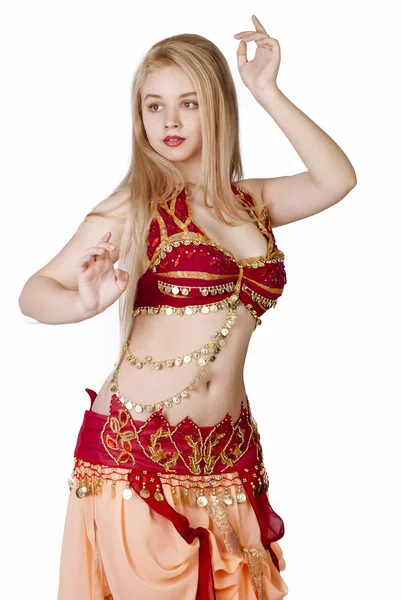 In fact, for most skinny girls, the abdominal muscles only work in one direction. Their stomach is always very tense, as if drawn in, but they do not know how to relax it. The owners of a round tummy often have the opposite problem. There is an element in the belly dance, in which the stomach is first strongly drawn in, and then abruptly relaxes, as a result of which not only the abdominal muscles are strengthened, but also a powerful healing massage of the woman's internal organs occurs. Many who have finally decided to take up dancing do not even suspect what metamorphoses can occur in their minds. The fact is that through physical liberation comes psychological liberation, a woman straightens her back, gains flexibility and grace, begins to feel more attractive, a sparkle appears in her eyes, and this makes her much more attractive. Thus, a woman acquires self-confidence, and along with physical comfort, psychological comfort comes into her life.
In fact, for most skinny girls, the abdominal muscles only work in one direction. Their stomach is always very tense, as if drawn in, but they do not know how to relax it. The owners of a round tummy often have the opposite problem. There is an element in the belly dance, in which the stomach is first strongly drawn in, and then abruptly relaxes, as a result of which not only the abdominal muscles are strengthened, but also a powerful healing massage of the woman's internal organs occurs. Many who have finally decided to take up dancing do not even suspect what metamorphoses can occur in their minds. The fact is that through physical liberation comes psychological liberation, a woman straightens her back, gains flexibility and grace, begins to feel more attractive, a sparkle appears in her eyes, and this makes her much more attractive. Thus, a woman acquires self-confidence, and along with physical comfort, psychological comfort comes into her life.
I have heard the opinion that in the process of learning to dance belly dance hidden psychological problems of a woman are highlighted.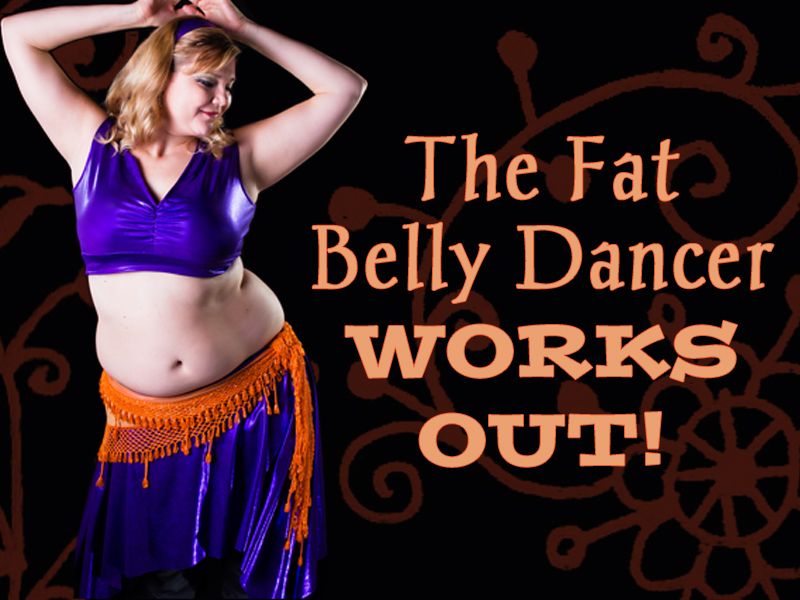 For example, if at the first lessons in the dance studio some women experience stiffness of the lower body, then this indicates a suppression of oneself sexually. Others feel tightness in the thoracic region, it is hard for them to shake their shoulders and chest. This indicates a lack of sincerity and openness in relations with the outside world. Thus, the emancipation in movements that a woman acquires in the process of learning to dance belly is a step towards her inner freedom. Despite the fact that today belly dance is a fully formed independent dance style, it is hard not to notice that some of its elements have entered many modern dance styles. To be convinced of this, it is enough to turn on the TV, where not only Shakira in her video with a herd of horses depicts waves with her stomach and hips, but also Britney Spears in a Coca-Cola advertisement to the rhythms of "We will rock you". "Brilliant" in their videos also do not hesitate to shake their asses and shoulders in an oriental manner, and "Viagra" bend back, as oriental dancers do.
For example, if at the first lessons in the dance studio some women experience stiffness of the lower body, then this indicates a suppression of oneself sexually. Others feel tightness in the thoracic region, it is hard for them to shake their shoulders and chest. This indicates a lack of sincerity and openness in relations with the outside world. Thus, the emancipation in movements that a woman acquires in the process of learning to dance belly is a step towards her inner freedom. Despite the fact that today belly dance is a fully formed independent dance style, it is hard not to notice that some of its elements have entered many modern dance styles. To be convinced of this, it is enough to turn on the TV, where not only Shakira in her video with a herd of horses depicts waves with her stomach and hips, but also Britney Spears in a Coca-Cola advertisement to the rhythms of "We will rock you". "Brilliant" in their videos also do not hesitate to shake their asses and shoulders in an oriental manner, and "Viagra" bend back, as oriental dancers do. And this is not surprising, because oriental dance has something to borrow, since all its movements are very beautiful, aesthetic and original. Experts believe that soon belly dance and oriental style will conquer the whole world.
And this is not surprising, because oriental dance has something to borrow, since all its movements are very beautiful, aesthetic and original. Experts believe that soon belly dance and oriental style will conquer the whole world.
During the New Year holidays, I spent my holidays in Malta, which is famous for its discos. I incorporated elements of oriental style into my regular disco dance and noticed that a lot of people were paying attention to me. And when the oriental music began to sound and I "went completely away", the people simply surrounded me and began to applaud. After the dance, a middle-aged English woman approached me and said that she and her husband could not take their eyes off me, and that I amazed everyone with my incendiary dance. And, you know, I believed in her sincerity. To be honest, I did not expect such a solo number from myself. Moreover, I did not expect such an enthusiastic reaction from others.
I would like to note that all of the above is not an agitation for belly dance classes.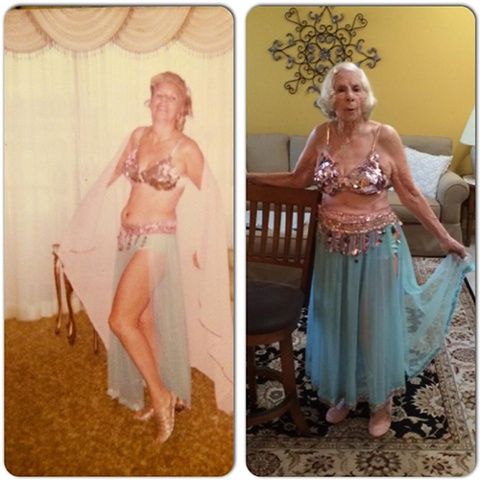 To be honest, I even feel jealous that someone else, besides me, is so intensely engaged in oriental dances. After all, this means that they will be able to move just as beautifully and gracefully and learn the secret of female sexual attractiveness. Historians express a variety of assumptions about the place of origin of the belly dance. I like the next version the most.
To be honest, I even feel jealous that someone else, besides me, is so intensely engaged in oriental dances. After all, this means that they will be able to move just as beautifully and gracefully and learn the secret of female sexual attractiveness. Historians express a variety of assumptions about the place of origin of the belly dance. I like the next version the most.
More than 4000 years ago in India there was a temple dance, the task of which was to teach expectant mothers the movements and stretches that would facilitate the birth of a child. Later, elements of the temple dance entered the repertoire of street dancers, mostly gypsies, and soon the dance spread throughout the east, enriched with elements of the dances of the peoples of Turkey, Persia, Greece and North Africa. Today, more than 50 types of oriental dance are known. The most popular of them are Turkish and Egyptian.
To be honest, the history of dance doesn't really matter to me personally. But I am sincerely grateful to those completely unknown people who came up with this dance.
